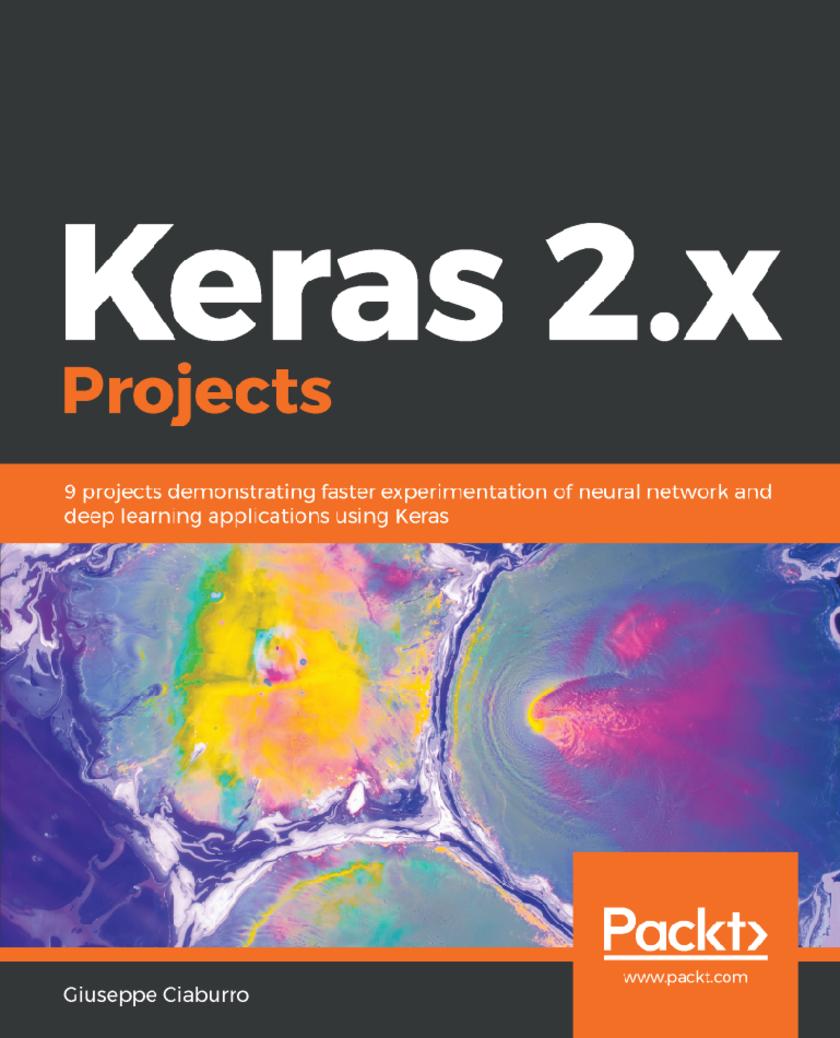
Keras 2.x Projects
¥81.74
Demonstrate fundamentals of Deep Learning and neural network methodologies using Keras 2.x Key Features *Experimental projects showcasing the implementation of high-performance deep learning models with Keras. * *Use-cases across reinforcement learning, natural language processing, GANs and computer vision. * *Build strong fundamentals of Keras in the area of deep learning and artificial intelligence. Book Description Keras 2.x Projects explains how to leverage the power of Keras to build and train state-of-the-art deep learning models through a series of practical projects that look at a range of real-world application areas. To begin with, you will quickly set up a deep learning environment by installing the Keras library. Through each of the projects, you will explore and learn the advanced concepts of deep learning and will learn how to compute and run your deep learning models using the advanced offerings of Keras. You will train fully-connected multilayer networks, convolutional neural networks, recurrent neural networks, autoencoders and generative adversarial networks using real-world training datasets. The projects you will undertake are all based on real-world scenarios of all complexity levels, covering topics such as language recognition, stock volatility, energy consumption prediction, faster object classification for self-driving vehicles, and more. By the end of this book, you will be well versed with deep learning and its implementation with Keras. You will have all the knowledge you need to train your own deep learning models to solve different kinds of problems. What you will learn *Apply regression methods to your data and understand how the regression algorithm works *Understand the basic concepts of classification methods and how to implement them in the Keras environment *Import and organize data for neural network classification analysis *Learn about the role of rectified linear units in the Keras network architecture *Implement a recurrent neural network to classify the sentiment of sentences from movie reviews *Set the embedding layer and the tensor sizes of a network Who this book is for If you are a data scientist, machine learning engineer, deep learning practitioner or an AI engineer who wants to build speedy intelligent applications with minimal lines of codes, then this book is the best fit for you. Sound knowledge of machine learning and basic familiarity with Keras library would be useful.
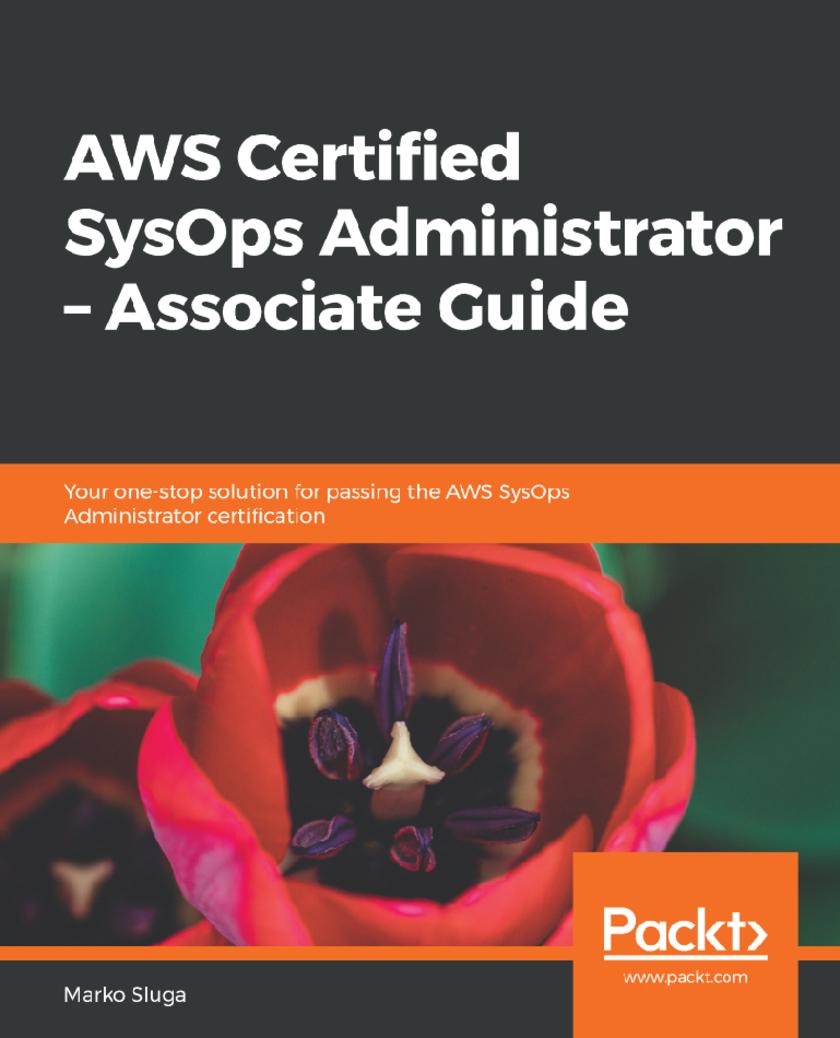
AWS Certified SysOps Administrator – Associate Guide
¥81.74
An effective guide to becoming an AWS Certified SysOps Administrator Key Features * Not only pass the certification with confidence but also enhance your skills to solving real-world scenarios. * A practical guide to getting you hands-on experience with application management, deployment, operation. * Enhance your AWS skills with practice questions and mock tests. Book Description AWS certifications are becoming one of the must have certifications for any IT professional working on an AWS Cloud platform. This book will act as your one stop preparation guide to validate your technical expertise in deployment, management, and operations on the AWS platform. Along with exam specific content this book will also deep dive into real world scenarios and hands-on instructions. This book will revolve around concepts like teaching you to deploy, manage, and operate scalable, highly available, and fault tolerant systems on AWS. You will also learn to migrate an existing on-premises application to AWS. You get hands-on experience in selecting the appropriate AWS service based on compute, data, or security requirements. This book will also get you well versed with estimating AWS usage costs and identifying operational cost control mechanisms. By the end of this book, you will be all prepared to implement and manage resources efficiently on the AWS cloud along with confidently passing the AWS Certified SysOps Administrator – Associate exam. What you will learn * Create and manage users, groups, and permissions using AWS IAM services * Create a secure VPC with public and private subnets, Network Access Control, and security groups * Get started with launching your first EC2 instance, and working with it * Handle application traffic with ELB and monitor AWS resources with CloudWatch * Work with S3, Glacier, and CloudFront * Work across distributed application components using SWF * Understand event-based processing with Lambda and messaging SQS and SNS in AWS * Get familiar with AWS deployment concepts and tools including Elastic Beanstalk, CloudFormation and AWS OpsWorks Who this book is for If you are a system administrator or a system engineer interested in leveraging the AWS platform to deploy applications then, this book is for you. IT professionals interested in passing the AWS Certified Sysops Administrator will also benefit from this book. Some basic understanding of working AWS components would do wonders.
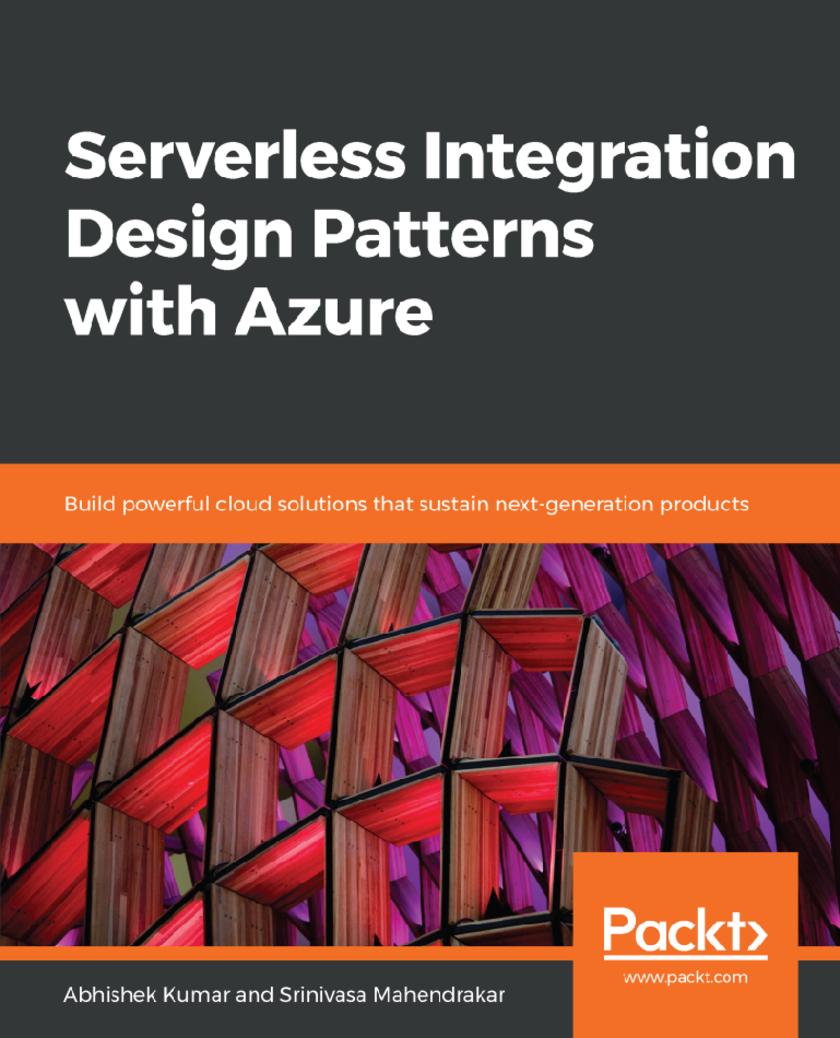
Serverless Integration Design Patterns with Azure
¥81.74
A practical guide that helps you progress to using modern integration methods and leverage new cloud capability models Key Features * Design critical hybrid integration solutions for your organization * Gain in-depth knowledge of how to build cloud-native integration solutions * Leverage cognitive services to build smart cloud solutions Book Description With more enterprises adapting cloud-based and API-based solutions, application integration has become more relevant and significant than ever before. Parallelly, Serverless Integration has gained popularity, as it helps agile organizations to build integration solutions quickly without having to worry about infrastructure costs. With Microsoft Azure’s serverless offerings, such as Logic Apps, Azure Functions, API Management, Azure Event Grid and Service Bus, organizations can build powerful, secure, and scalable integration solutions with ease. The primary objective of this book is to help you to understand various serverless offerings included within Azure Integration Services, taking you through the basics and industry practices and patterns. This book starts by explaining the concepts of services such as Azure Functions, Logic Apps, and Service Bus with hands-on examples and use cases. After getting to grips with the basics, you will be introduced to API Management and building B2B solutions using Logic Apps Enterprise Integration Pack. This book will help readers to understand building hybrid integration solutions and touches upon Microsoft Cognitive Services and leveraging them in modern integration solutions. Industry practices and patterns are brought to light at appropriate opportunities while explaining various concepts. What you will learn * Learn about the design principles of Microsoft Azure Serverless Integration * Get insights into Azure Functions, Logic Apps, Azure Event Grid and Service Bus * Secure and manage your integration endpoints using Azure API Management * Build advanced B2B solutions using Logic Apps, Enterprise Integration Pack * Monitor integration solutions using tools available on the market * Discover design patterns for hybrid integration Who this book is for Serverless Integration Design Patterns with Azure is for you if you are a solution architect or integration professional aiming to build complex cloud solutions for your organization. Developers looking to build next-level hybrid or cloud solutions will also find this book useful. Prior programming knowledge is necessary.
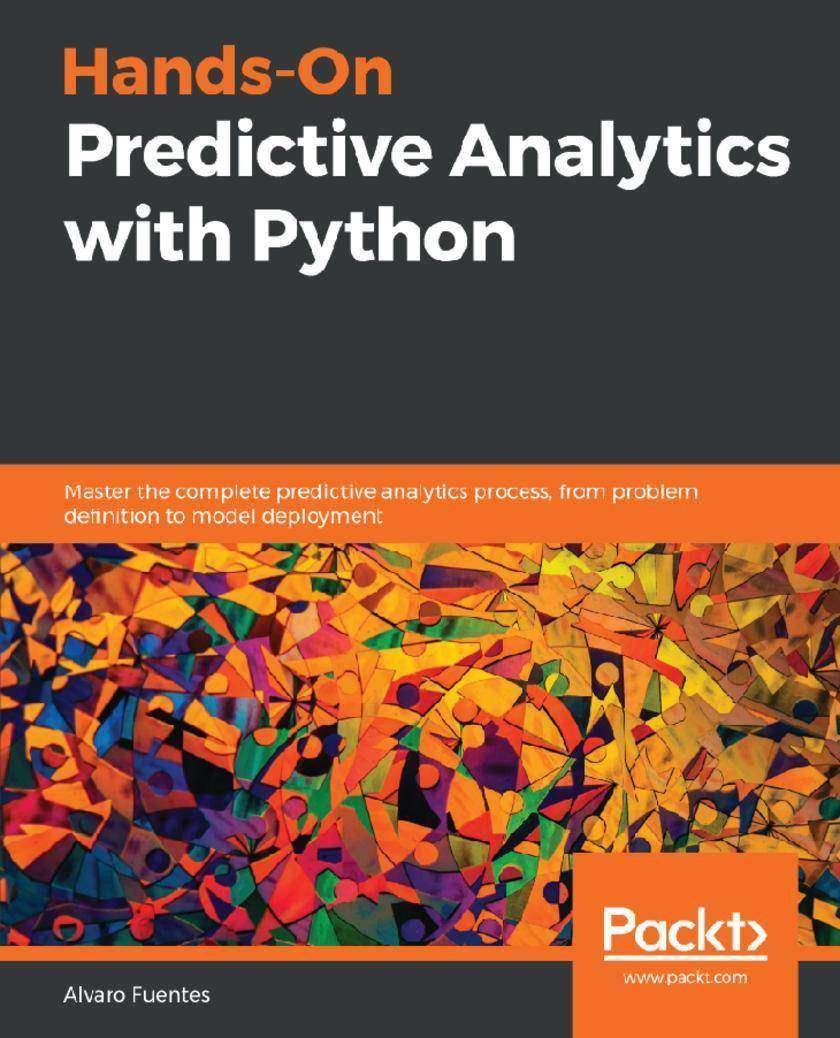
Hands-On Predictive Analytics with Python
¥81.74
Step-by-step guide to build high performing predictive applications Key Features *Use the Python data analytics ecosystem to implement end-to-end predictive analytics projects *Explore advanced predictive modeling algorithms with an emphasis on theory with intuitive explanations *Learn to deploy a predictive model's results as an interactive application Book Description Predictive analytics is an applied field that employs a variety of quantitative methods using data to make predictions. It involves much more than just throwing data onto a computer to build a model. This book provides practical coverage to help you understand the most important concepts of predictive analytics. Using practical, step-by-step examples, we build predictive analytics solutions while using cutting-edge Python tools and packages. The book's step-by-step approach starts by defining the problem and moves on to identifying relevant data. We will also be performing data preparation, exploring and visualizing relationships, building models, tuning, evaluating, and deploying model. Each stage has relevant practical examples and efficient Python code. You will work with models such as KNN, Random Forests, and neural networks using the most important libraries in Python's data science stack: NumPy, Pandas, Matplotlib, Seaborn, Keras, Dash, and so on. In addition to hands-on code examples, you will find intuitive explanations of the inner workings of the main techniques and algorithms used in predictive analytics. By the end of this book, you will be all set to build high-performance predictive analytics solutions using Python programming. What you will learn *Get to grips with the main concepts and principles of predictive analytics *Learn about the stages involved in producing complete predictive analytics solutions *Understand how to define a problem, propose a solution, and prepare a dataset *Use visualizations to explore relationships and gain insights into the dataset *Learn to build regression and classification models using scikit-learn *Use Keras to build powerful neural network models that produce accurate predictions *Learn to serve a model's predictions as a web application Who this book is for This book is for data analysts, data scientists, data engineers, and Python developers who want to learn about predictive modeling and would like to implement predictive analytics solutions using Python's data stack. People from other backgrounds who would like to enter this exciting field will greatly benefit from reading this book. All you need is to be proficient in Python programming and have a basic understanding of statistics and college-level algebra.
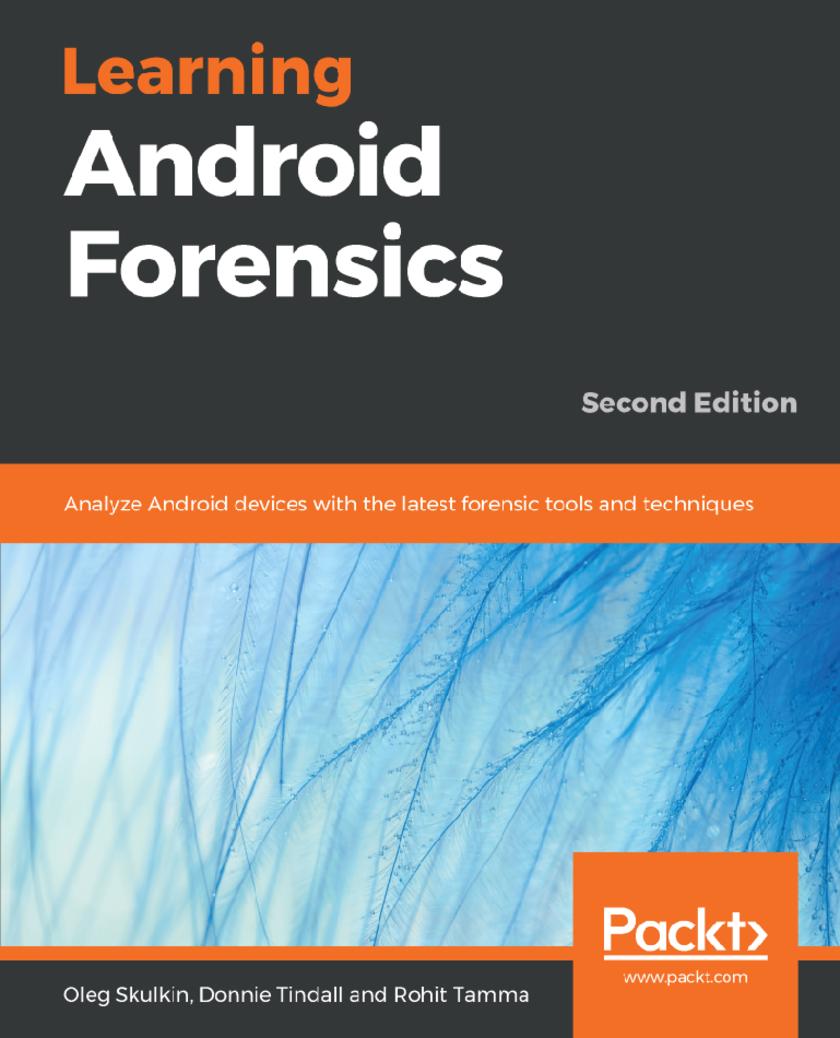
Learning Android Forensics
¥81.74
A comprehensive guide to Android forensics, from setting up the workstation to analyzing key artifacts Key Features *Get up and running with modern mobile forensic strategies and techniques *Analyze the most popular Android applications using free and open source forensic tools *Learn malware detection and analysis techniques to investigate mobile cybersecurity incidents Book Description Many forensic examiners rely on commercial, push-button tools to retrieve and analyze data, even though there is no tool that does either of these jobs perfectly. Learning Android Forensics will introduce you to the most up-to-date Android platform and its architecture, and provide a high-level overview of what Android forensics entails. You will understand how data is stored on Android devices and how to set up a digital forensic examination environment. As you make your way through the chapters, you will work through various physical and logical techniques to extract data from devices in order to obtain forensic evidence. You will also learn how to recover deleted data and forensically analyze application data with the help of various open source and commercial tools. In the concluding chapters, you will explore malware analysis so that you’ll be able to investigate cybersecurity incidents involving Android malware. By the end of this book, you will have a complete understanding of the Android forensic process, you will have explored open source and commercial forensic tools, and will have basic skills of Android malware identification and analysis. What you will learn *Understand Android OS and architecture *Set up a forensics environment for Android analysis *Perform logical and physical data extractions *Learn to recover deleted data *Explore how to analyze application data *Identify malware on Android devices *Analyze Android malware Who this book is for If you are a forensic analyst or an information security professional wanting to develop your knowledge of Android forensics, then this is the book for you. Some basic knowledge of the Android mobile platform is expected.
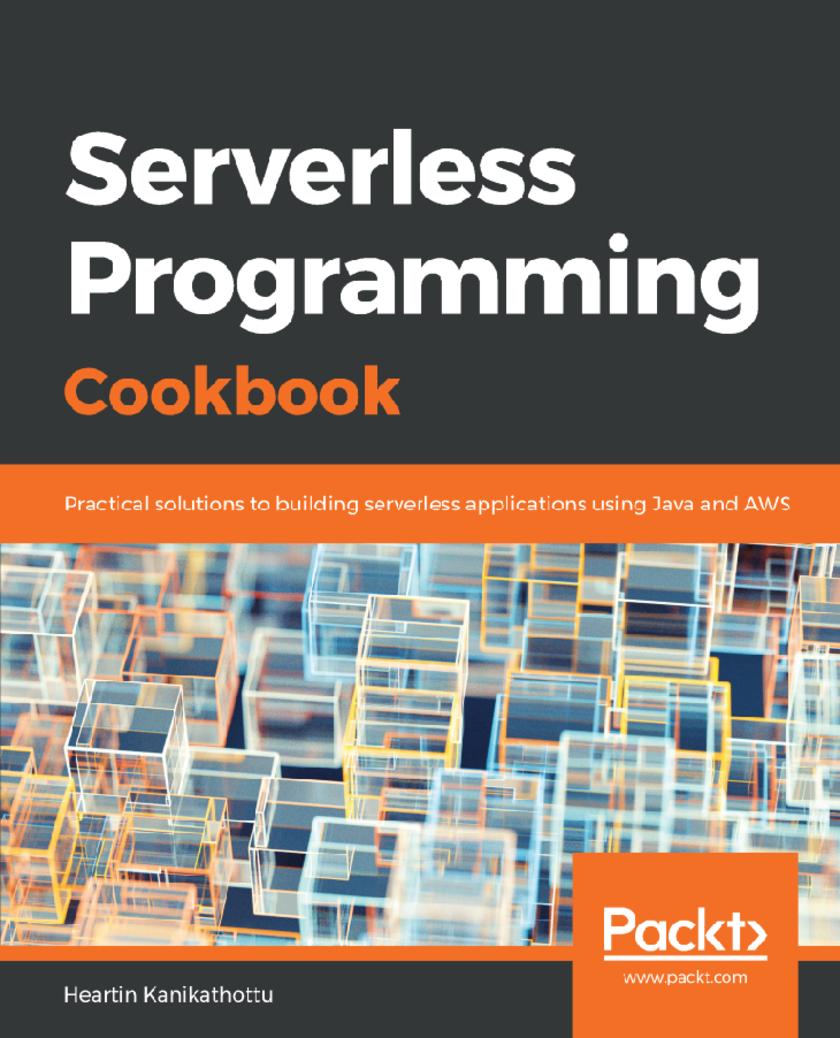
Serverless Programming Cookbook
¥81.74
Build, secure, and deploy real-world serverless applications in AWS and peek into the serverless cloud offerings from Azure, Google Cloud, and IBM Cloud Key Features * Build serverless applications with AWS Lambda, AWS CloudFormation and AWS CloudWatch * Perform data analytics and natural language processing(NLP)on the AWS serverless platform * Explore various design patterns and best practices involved in serverless computing Book Description Managing physical servers will be a thing of the past once you’re able to harness the power of serverless computing. If you’re already prepped with the basics of serverless computing, Serverless Programming Cookbook will help you take the next step ahead. This recipe-based guide provides solutions to problems you might face while building serverless applications. You'll begin by setting up Amazon Web Services (AWS), the primary cloud provider used for most recipes. The next set of recipes will cover various components to build a Serverless application including REST APIs, database, user management, authentication, web hosting, domain registration, DNS management, CDN, messaging, notifications and monitoring. The book also introduces you to the latest technology trends such as Data Streams, Machine Learning and NLP. You will also see patterns and practices for using various services in a real world application. Finally, to broaden your understanding of Serverless computing, you'll also cover getting started guides for other cloud providers such as Azure, Google Cloud Platform and IBM cloud. By the end of this book, you’ll have acquired the skills you need to build serverless applications efficiently using various cloud offerings. What you will learn * Serverless computing in AWS and explore services with other clouds * Develop full-stack apps with API Gateway, Cognito, Lambda and DynamoDB * Web hosting with S3, CloudFront, Route 53 and AWS Certificate Manager * SQS and SNS for effective communication between microservices * Monitoring and troubleshooting with CloudWatch logs and metrics * Explore Kinesis Streams, Amazon ML models and Alexa Skills Kit Who this book is for For developers looking for practical solutions to common problems while building a serverless application, this book provides helpful recipes. To get started with this intermediate-level book, knowledge of basic programming is a must.
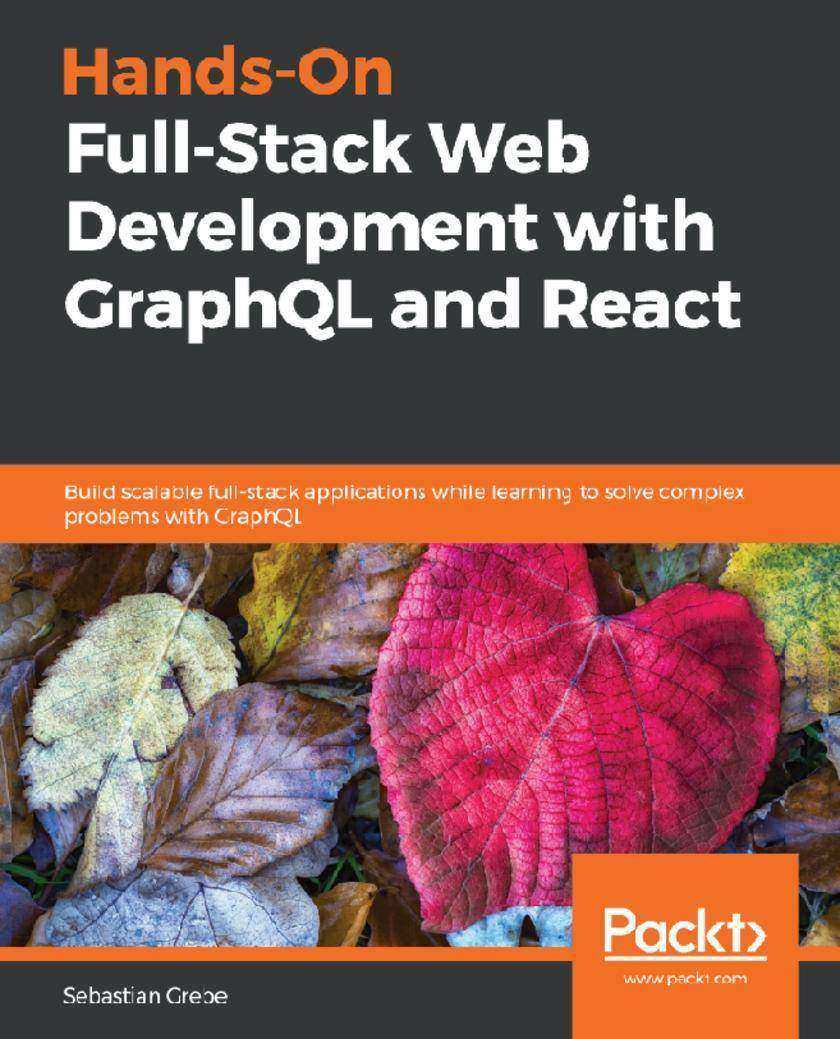
Hands-On Full-Stack Web Development with GraphQL and React
¥81.74
Unearth the power of GraphQL, React, Apollo, Node, and Express to build a scalable, production ready application Key Features * Build full stack applications with modern APIs using GraphQL and Apollo * Integrate Apollo into React and build frontend components using GraphQL * Implement a self-updating notification pop-up with a unique GraphQL feature called Subscriptions Book Description React, one of the most widely used JavaScript frameworks, allows developers to build fast and scalable front end applications for any use case. GraphQL is the modern way of querying an API. It represents an alternative to REST and is the next evolution in web development. Combining these two revolutionary technologies will give you a future-proof and scalable stack you can start building your business around. This book will guide you in implementing applications by using React, Apollo, Node.js and SQL. We'll focus on solving complex problems with GraphQL, such as abstracting multi-table database architectures and handling image uploads. Our client, and server will be powered by Apollo. Finally we will go ahead and build a complete Graphbook. While building the app, we'll cover the tricky parts of connecting React to the back end, and maintaining and synchronizing state. We'll learn all about querying data and authenticating users. We'll write test cases to verify the front end and back end functionality for our application and cover deployment. By the end of the book, you will be proficient in using GraphQL and React for your full-stack development requirements. What you will learn * Resolve data from multi-table database and system architectures * Build a GraphQL API by implementing models and schemas with Apollo and Sequelize * Set up an Apollo Client and build front end components using React * Use Mocha to test your full-stack application * Write complex React components and share data across them * Deploy your application using Docker Who this book is for The book is for web developers who want to enhance their skills and build complete full stack applications using industry standards. Familiarity with JavaScript, React, and GraphQL is expected to get the most from this book.
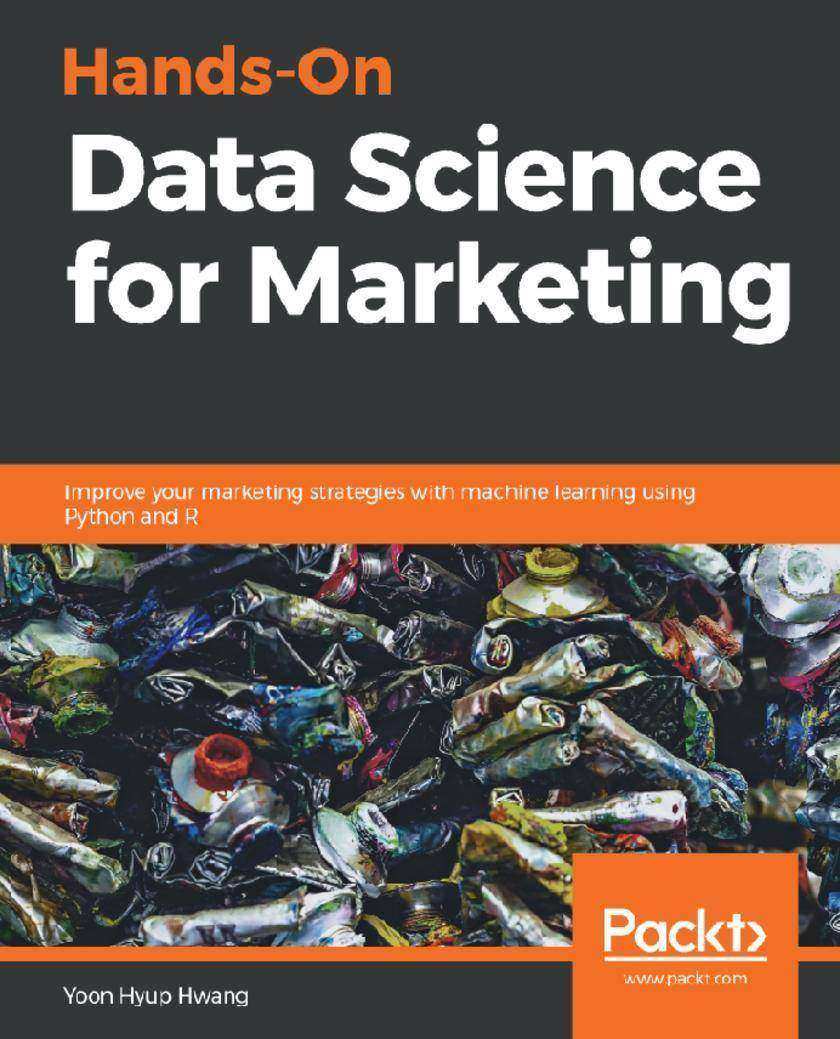
Hands-On Data Science for Marketing
¥81.74
Optimize your marketing strategies through analytics and machine learning Key Features * Understand how data science drives successful marketing campaigns * Use machine learning for better customer engagement, retention, and product recommendations * Extract insights from your data to optimize marketing strategies and increase profitability Book Description Regardless of company size, the adoption of data science and machine learning for marketing has been rising in the industry. With this book, you will learn to implement data science techniques to understand the drivers behind the successes and failures of marketing campaigns. This book is a comprehensive guide to help you understand and predict customer behaviors and create more effectively targeted and personalized marketing strategies. This is a practical guide to performing simple-to-advanced tasks, to extract hidden insights from the data and use them to make smart business decisions. You will understand what drives sales and increases customer engagements for your products. You will learn to implement machine learning to forecast which customers are more likely to engage with the products and have high lifetime value. This book will also show you how to use machine learning techniques to understand different customer segments and recommend the right products for each customer. Apart from learning to gain insights into consumer behavior using exploratory analysis, you will also learn the concept of A/B testing and implement it using Python and R. By the end of this book, you will be experienced enough with various data science and machine learning techniques to run and manage successful marketing campaigns for your business. What you will learn * Learn how to compute and visualize marketing KPIs in Python and R * Master what drives successful marketing campaigns with data science * Use machine learning to predict customer engagement and lifetime value * Make product recommendations that customers are most likely to buy * Learn how to use A/B testing for better marketing decision making * Implement machine learning to understand different customer segments Who this book is for If you are a marketing professional, data scientist, engineer, or a student keen to learn how to apply data science to marketing, this book is what you need! It will be beneficial to have some basic knowledge of either Python or R to work through the examples. This book will also be beneficial for beginners as it covers basic-to-advanced data science concepts and applications in marketing with real-life examples.
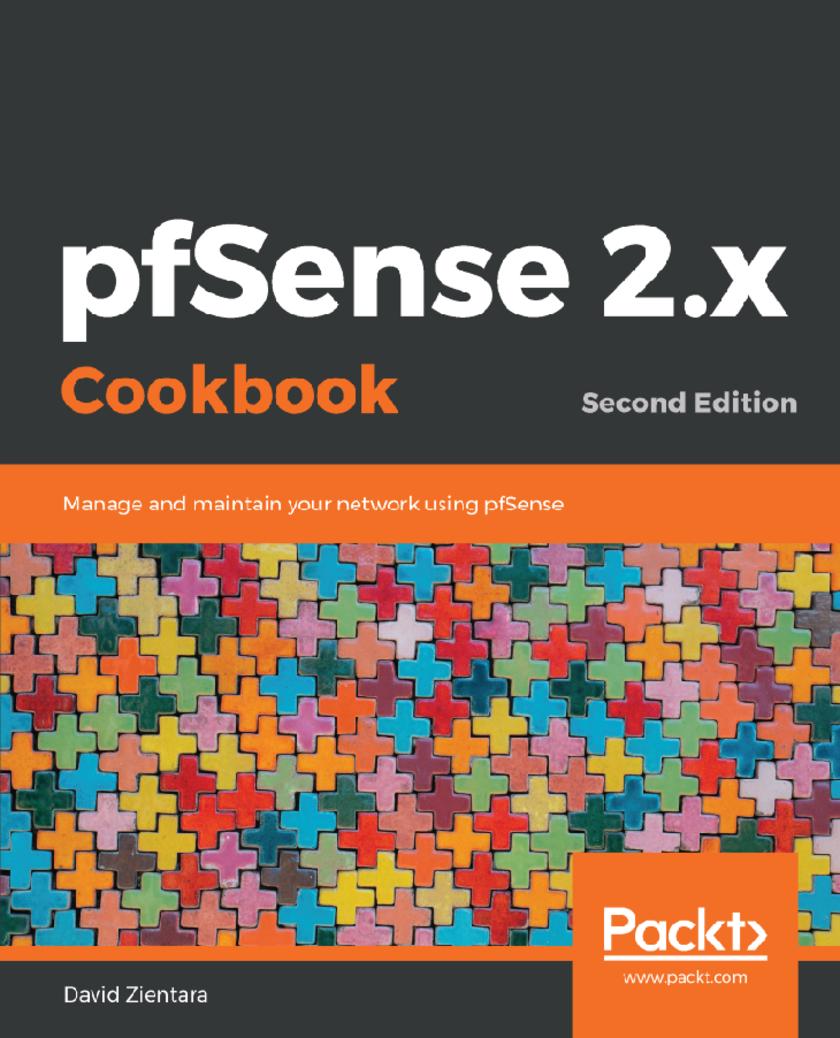
pfSense 2.x Cookbook
¥81.74
A practical, example-driven guide to configuring even the most advanced features of pfSense 2.x Key Features *Build a high-availability fault-tolerant security system with pfSense 2.x *Leverage the latest version of pfSense to secure your cloud environment *A recipe-based guide that will help you enhance your on-premise and cloud security principles Book Description pfSense is an open source distribution of the FreeBSD-based firewall that provides a platform for ?exible and powerful routing and firewalling. The versatility of pfSense presents us with a wide array of configuration options, which makes determining requirements a little more difficult and a lot more important compared to other offerings. pfSense 2.x Cookbook – Second Edition starts by providing you with an understanding of how to complete the basic steps needed to render a pfSense firewall operational. It starts by showing you how to set up different forms of NAT entries and firewall rules and use aliases and scheduling in firewall rules. Moving on, you will learn how to implement a captive portal set up in different ways (no authentication, user manager authentication, and RADIUS authentication), as well as NTP and SNMP configuration. You will then learn how to set up a VPN tunnel with pfSense. The book then focuses on setting up traffic shaping with pfSense, using either the built-in traffic shaping wizard, custom ?oating rules, or Snort. Toward the end, you will set up multiple WAN interfaces, load balancing and failover groups, and a CARP failover group. You will also learn how to bridge interfaces, add static routing entries, and use dynamic routing protocols via third-party packages. What you will learn *Configure the essential pfSense services (namely, DHCP, DNS, and DDNS) *Create aliases, firewall rules, NAT port-forward rules, and rule schedules *Create multiple WAN interfaces in load-balanced or failover configurations *Configure firewall redundancy with a CARP firewall failover *Configure backup/restoration and automatic configuration-file backup *Configure some services and perform diagnostics with command-line utilities Who this book is for This book is intended for all levels of network administrators. If you are an advanced user of pfSense, then you can flip to a particular recipe and quickly accomplish the task at hand; if you are new to pfSense, on the other hand, you can work through the book chapter by chapter and learn all of the features of the system from the ground up.
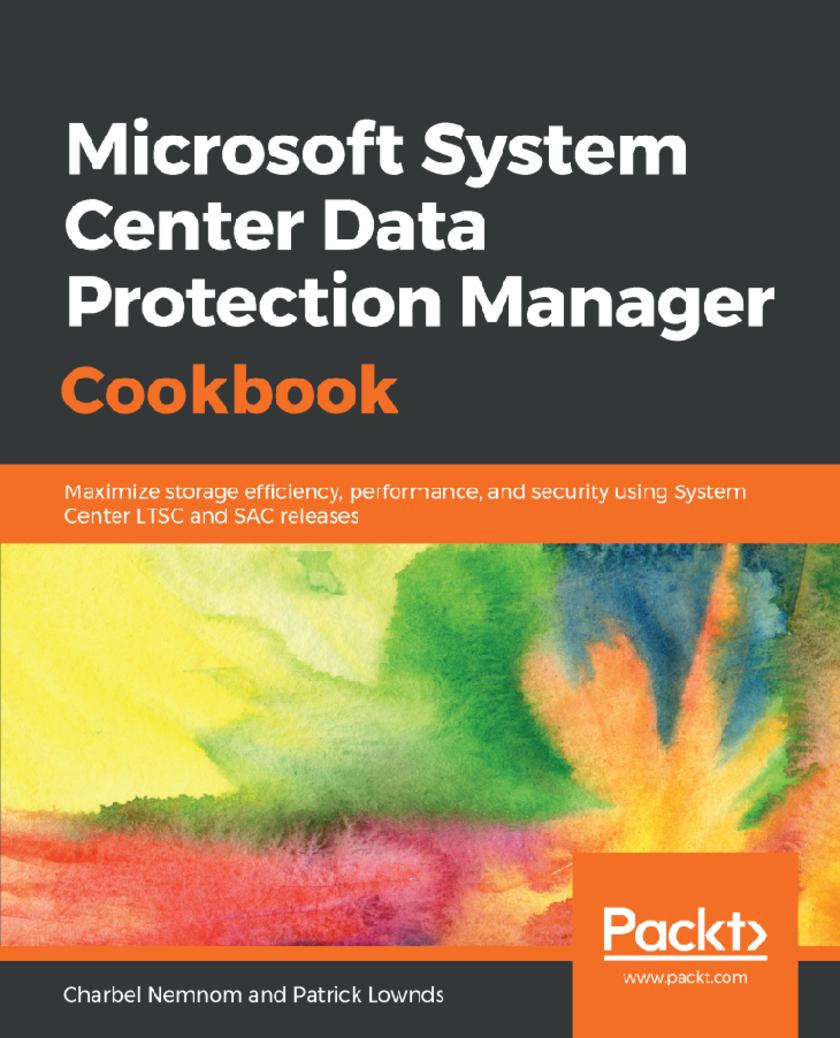
Microsoft System Center Data Protection Manager Cookbook
¥81.74
Over 60 recipes to achieve a robust and advanced backup and recovery solution leveraging SCDPM Key Features *Adapt to the modern data center design challenges and improve storage efficiency *Effective recipes to help you create your own robust architectural designs *Solve data protection and recovery problems in your organization Book Description System Center Data Protection Manager (SCDPM) is a robust enterprise backup and recovery system that contributes to your BCDR strategy by facilitating the backup and recovery of enterprise data. With an increase in data recovery and protection problems faced in organizations, it has become important to keep data safe and recoverable. This book contains recipes that will help you upgrade to SCDPM and it covers the advanced features and functionality of SCDPM. This book starts by helping you install SCDPM and then moves on to post-installation and management tasks. You will come across a lot of useful recipes that will help you recover your VMware and Hyper-V VMs. It will also walk you through tips for monitoring SCDPM in different scenarios. Next, the book will also offer insights into protecting windows workloads followed by best practices on SCDPM. You will also learn to back up your Azure Stack Infrastructure using Azure Backup. You will also learn about recovering data from backup and implementing disaster recovery. Finally, the book will show you how to configure the protection groups to enable online protection and troubleshoot Microsoft Azure Backup Agent. What you will learn *Install and prepare SQL Server for the SCDPM database *Reduce backup storage with SCDPM and data deduplication *Learn about the prerequisites for supported Hyper-V Server protection *Integrate SCDPM with other System Center products to build optimal services *Protect and restore the SCDPM database *Protect your data center by integrating SCDPM with Azure Backup *Manually create online recovery points and recover production data from Azure *Protect and learn about the requirements to recover Azure Stack with SCDPM Who this book is for If you are an SCDPM administrator, this book will help you verify your knowledge and provide you with everything you need to know about the new release of System Center Data Protection Manager.
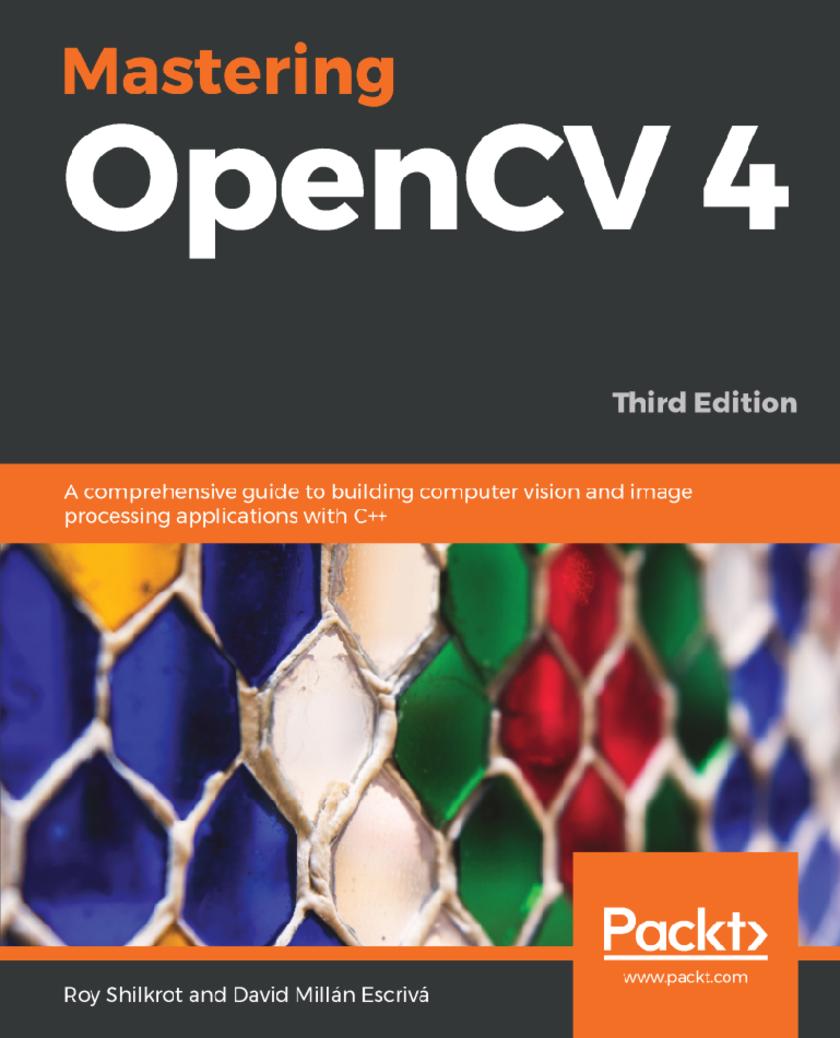
Mastering OpenCV 4
¥81.74
Work on practical computer vision projects covering advanced object detector techniques and modern deep learning and machine learning algorithms Key Features *Learn about the new features that help unlock the full potential of OpenCV 4 *Build face detection applications with a cascade classifier using face landmarks *Create an optical character recognition (OCR) model using deep learning and convolutional neural networks Book Description Mastering OpenCV, now in its third edition, targets computer vision engineers taking their first steps toward mastering OpenCV. Keeping the mathematical formulations to a solid but bare minimum, the book delivers complete projects from ideation to running code, targeting current hot topics in computer vision such as face recognition, landmark detection and pose estimation, and number recognition with deep convolutional networks. You’ll learn from experienced OpenCV experts how to implement computer vision products and projects both in academia and industry in a comfortable package. You’ll get acquainted with API functionality and gain insights into design choices in a complete computer vision project. You’ll also go beyond the basics of computer vision to implement solutions for complex image processing projects. By the end of the book, you will have created various working prototypes with the help of projects in the book and be well versed with the new features of OpenCV4. What you will learn *Build real-world computer vision problems with working OpenCV code samples *Uncover best practices in engineering and maintaining OpenCV projects *Explore algorithmic design approaches for complex computer vision tasks *Work with OpenCV’s most updated API (v4.0.0) through projects *Understand 3D scene reconstruction and Structure from Motion (SfM) *Study camera calibration and overlay AR using the ArUco Module Who this book is for This book is for those who have a basic knowledge of OpenCV and are competent C++ programmers. You need to have an understanding of some of the more theoretical/mathematical concepts, as we move quite quickly throughout the book.
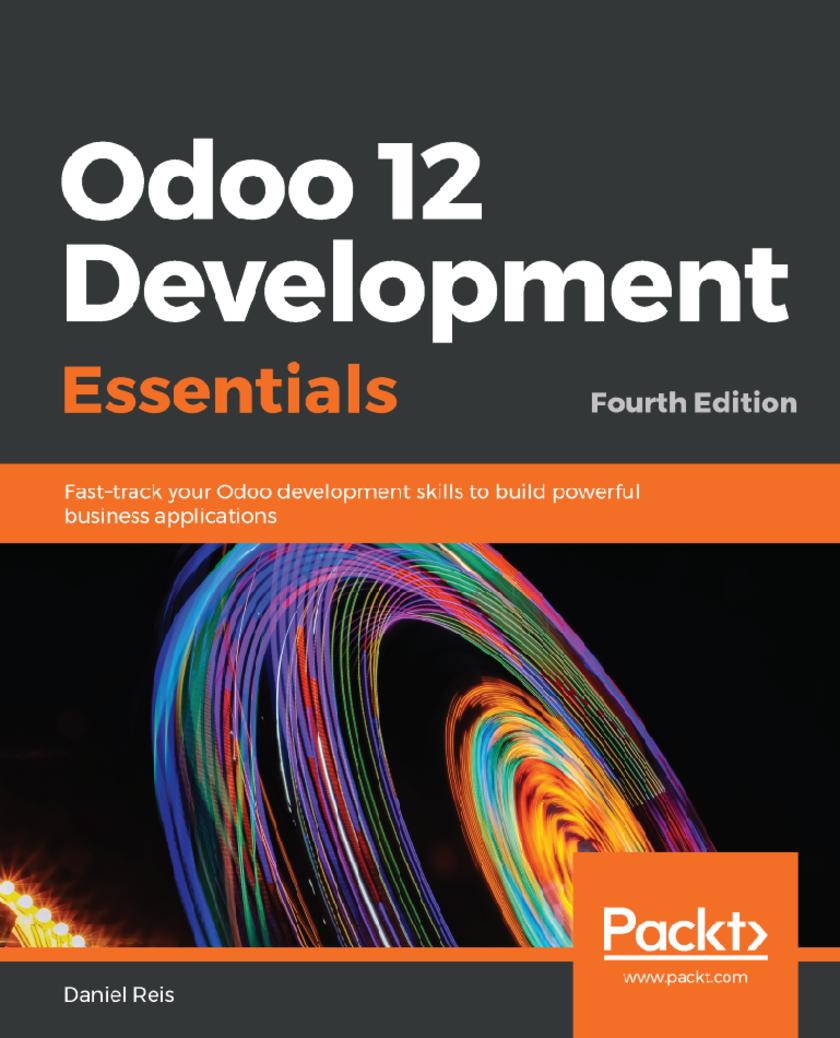
Odoo 12 Development Essentials
¥81.74
Extend your skills with Odoo 12 to build resourceful and open source business applications Key Features *Explore Odoo 12 capabilities to develop business applications *Program business logic and manipulate data to implement specific business rules in your applications *Integrate Python APIs for building customizable and scalable business logic Book Description Odoo is one of the best platforms for open source ERP and CRM. Its latest version, Odoo 12, brings with it new features and updates in Python packages to develop more customizable applications with additional cloud capabilities. The book begins by covering the development essentials for building business applications. You will start your journey by learning how to install and configure Odoo, and then transition from having no specific knowledge of Odoo to being ready for application development. You will develop your first Odoo application and understand topics such as models and views. Odoo 12 Development Essentials will also guide you in using server APIs to add business logic, helping you lay a solid foundation for advanced topics. As you progress through the chapters, you will be equipped to build and customize your applications and explore the new features in Odoo 12, such as cloud integration, to scale your business applications. You will get insights into building business logic and integrating various APIs into your application. By the end of the book, you will be able to build a business application from scratch by using the latest version of Odoo. What you will learn *Manage Odoo server instances *Create a new Odoo application from scratch using the most frequently used elements *Develop new models and use inheritance to extend existing models *Use ORM methods in the Odoo server and from external clients *Create Kanban views using QWeb effectively *Build custom web and website CMS pages *Use external APIs to integrate Odoo with external applications *Add automated tests and techniques to debug module business logic Who this book is for If you are a developer familiar with Python and MVC design and want to build business applications using Odoo, this book is for you.
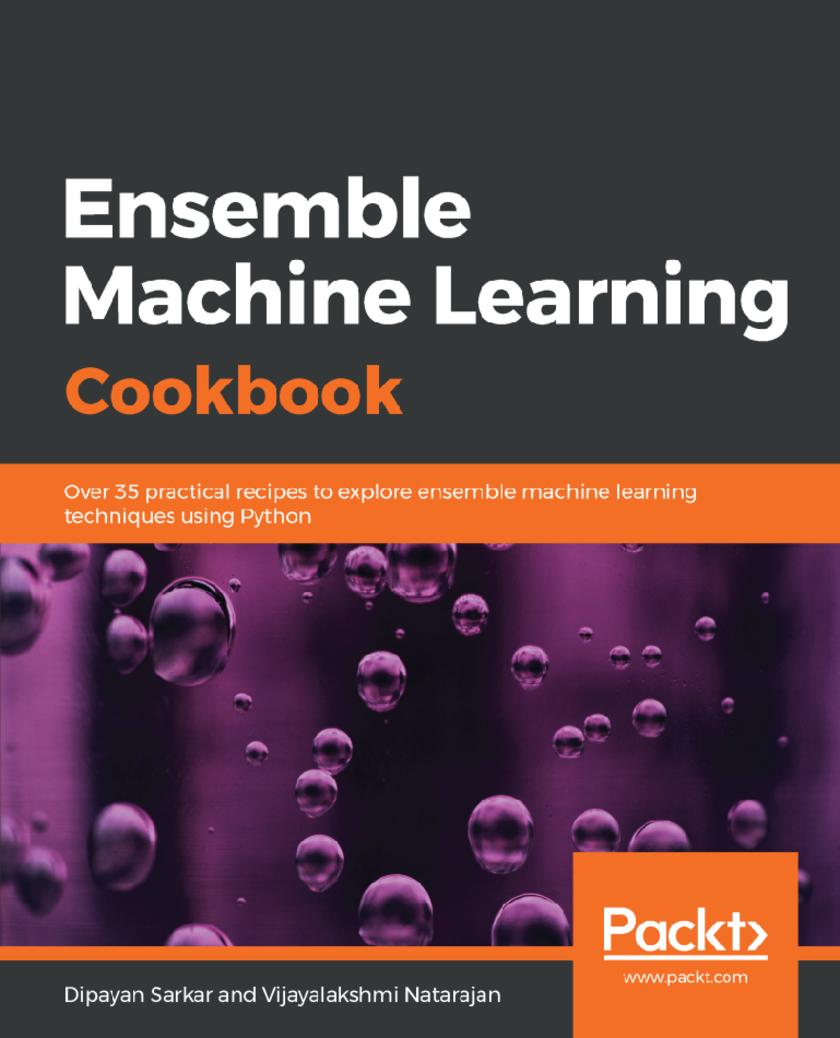
Ensemble Machine Learning Cookbook
¥81.74
Implement machine learning algorithms to build ensemble models using Keras, H2O, Scikit-Learn, Pandas and more Key Features * Apply popular machine learning algorithms using a recipe-based approach * Implement boosting, bagging, and stacking ensemble methods to improve machine learning models * Discover real-world ensemble applications and encounter complex challenges in Kaggle competitions Book Description Ensemble modeling is an approach used to improve the performance of machine learning models. It combines two or more similar or dissimilar machine learning algorithms to deliver superior intellectual powers. This book will help you to implement popular machine learning algorithms to cover different paradigms of ensemble machine learning such as boosting, bagging, and stacking. The Ensemble Machine Learning Cookbook will start by getting you acquainted with the basics of ensemble techniques and exploratory data analysis. You'll then learn to implement tasks related to statistical and machine learning algorithms to understand the ensemble of multiple heterogeneous algorithms. It will also ensure that you don't miss out on key topics, such as like resampling methods. As you progress, you’ll get a better understanding of bagging, boosting, stacking, and working with the Random Forest algorithm using real-world examples. The book will highlight how these ensemble methods use multiple models to improve machine learning results, as compared to a single model. In the concluding chapters, you'll delve into advanced ensemble models using neural networks, natural language processing, and more. You’ll also be able to implement models such as fraud detection, text categorization, and sentiment analysis. By the end of this book, you'll be able to harness ensemble techniques and the working mechanisms of machine learning algorithms to build intelligent models using individual recipes. What you will learn * Understand how to use machine learning algorithms for regression and classification problems * Implement ensemble techniques such as averaging, weighted averaging, and max-voting * Get to grips with advanced ensemble methods, such as bootstrapping, bagging, and stacking * Use Random Forest for tasks such as classification and regression * Implement an ensemble of homogeneous and heterogeneous machine learning algorithms * Learn and implement various boosting techniques, such as AdaBoost, Gradient Boosting Machine, and XGBoost Who this book is for This book is designed for data scientists, machine learning developers, and deep learning enthusiasts who want to delve into machine learning algorithms to build powerful ensemble models. Working knowledge of Python programming and basic statistics is a must to help you grasp the concepts in the book.
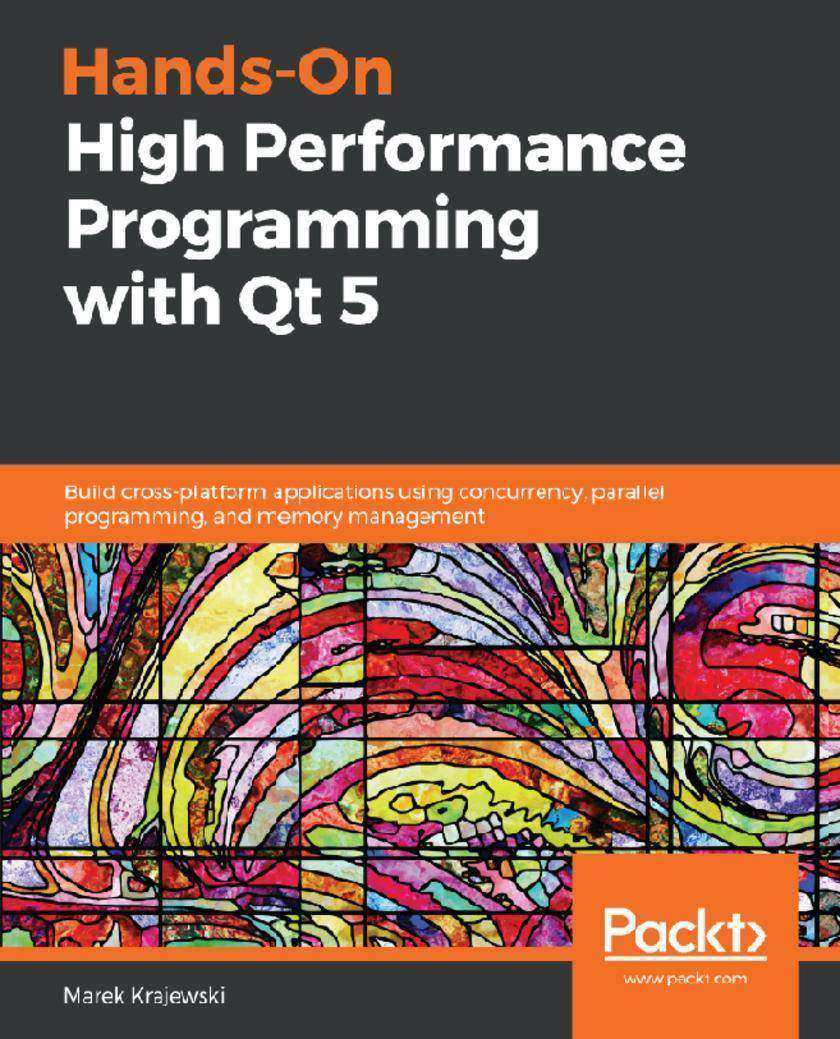
Hands-On High Performance Programming with Qt 5
¥81.74
Build efficient and fast Qt applications, target performance problems, and discover solutions to refine your code Key Features * Build efficient and concurrent applications in Qt to create cross-platform applications * Identify performance bottlenecks and apply the correct algorithm to improve application performance * Delve into parallel programming and memory management to optimize your code Book Description Achieving efficient code through performance tuning is one of the key challenges faced by many programmers. This book looks at Qt programming from a performance perspective. You'll explore the performance problems encountered when using the Qt framework and means and ways to resolve them and optimize performance. The book highlights performance improvements and new features released in Qt 5.9, Qt 5.11, and 5.12 (LTE). You'll master general computer performance best practices and tools, which can help you identify the reasons behind low performance, and the most common performance pitfalls experienced when using the Qt framework. In the following chapters, you’ll explore multithreading and asynchronous programming with C++ and Qt and learn the importance and efficient use of data structures. You'll also get the opportunity to work through techniques such as memory management and design guidelines, which are essential to improve application performance. Comprehensive sections that cover all these concepts will prepare you for gaining hands-on experience of some of Qt's most exciting application fields - the mobile and embedded development domains. By the end of this book, you'll be ready to build Qt applications that are more efficient, concurrent, and performance-oriented in nature What you will learn * Understand classic performance best practices * Get to grips with modern hardware architecture and its performance impact * Implement tools and procedures used in performance optimization * Grasp Qt-specific work techniques for graphical user interface (GUI) and platform programming * Make Transmission Control Protocol (TCP) and Hypertext Transfer Protocol (HTTP) performant and use the relevant Qt classes * Discover the improvements Qt 5.9 (and the upcoming versions) holds in store * Explore Qt's graphic engine architecture, strengths, and weaknesses Who this book is for This book is designed for Qt developers who wish to build highly performance applications for desktop and embedded devices. Programming Experience with C++ is required.
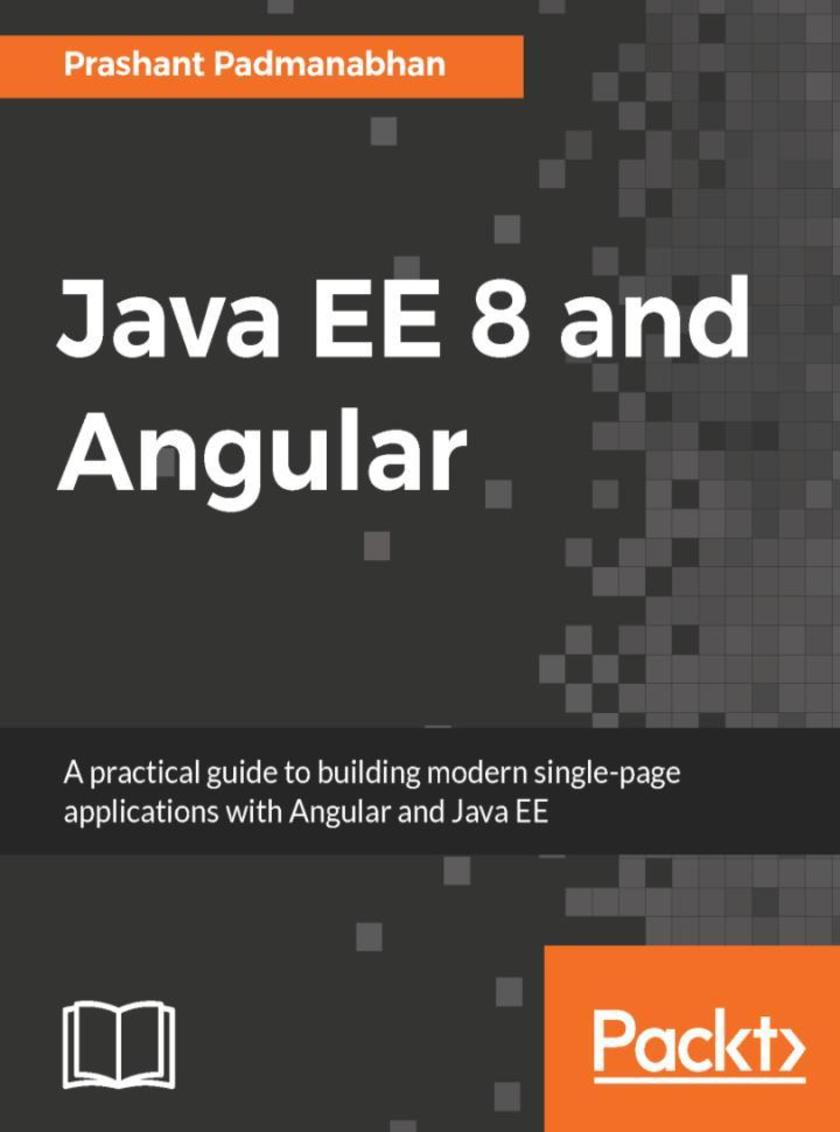
Java EE 8 and Angular
¥81.74
Learn how to build high-performing enterprise applications using Java EE powered by Angular at the frontend About This Book ? Leverage Java EE 8 features to build robust back end for your enterprise applications ? Use Angular to build a single page frontend and combine it with the Java EE backend ? Practical guide filled with ample real-world examples Who This Book Is For This book is for Java EE developers who would like to build modern enterprise web applications using Angular. No prior knowledge of Angular is expected. What You Will Learn ? Write CDI-based code in Java EE 8 applications ? Build an understanding of Microservices and what they mean in Java EE context ? Use Docker to build and run a microservice application ? Use configuration options to work effectively with JSON documents ? Understand asynchronous task handling and writing REST API clients ? Explore the fundamentals of TypeScript, which sets the foundation for working on Angular projects ? Use Angular CLI to add and manage new features ? Use JSON Web tokens to secure Angular applications against malicious attacks In Detail The demand for modern and high performing web enterprise applications is growing rapidly. No more is a basic HTML front-end enough to meet customer demands. This book will be your one stop guide to build outstanding enterprise web applications with Java EE and Angular. It will teach you how to harness the power of Java EE to build sturdy back ends while applying Angular on the front end. Your journey to building excellent web enterprise applications starts here! The book starts with a brief introduction to the fundamentals of Java EE and all the new APIs offered in the latest release. Armed with the knowledge of Java EE 8, you will go over what it’s like to build an end to end application, configure database connection for JPA, and build scalable microservice using RESTful APIs running in docker containers. Taking advantage of Payara Micro capabilities, you will build an Issue Management System, which will have various features exposed as services using Java EE backend. With a detailed coverage of Angular fundamentals, the book will expand the Issue Management System by building a modern single page application frontend. Moving forward you will learn to fit both the pieces together i.e. the frontend Angular application with the backend java EE microservices. As each unit in a microservice promotes high cohesion, you will learn different ways in which independent units can be tested efficiently. Finishing off with concepts on securing your enterprise applications, this book is a hands on guide to building Modern Web Applications. Style and approach This is a step-by-step tutorial that explains to building modern web enterprise applications.
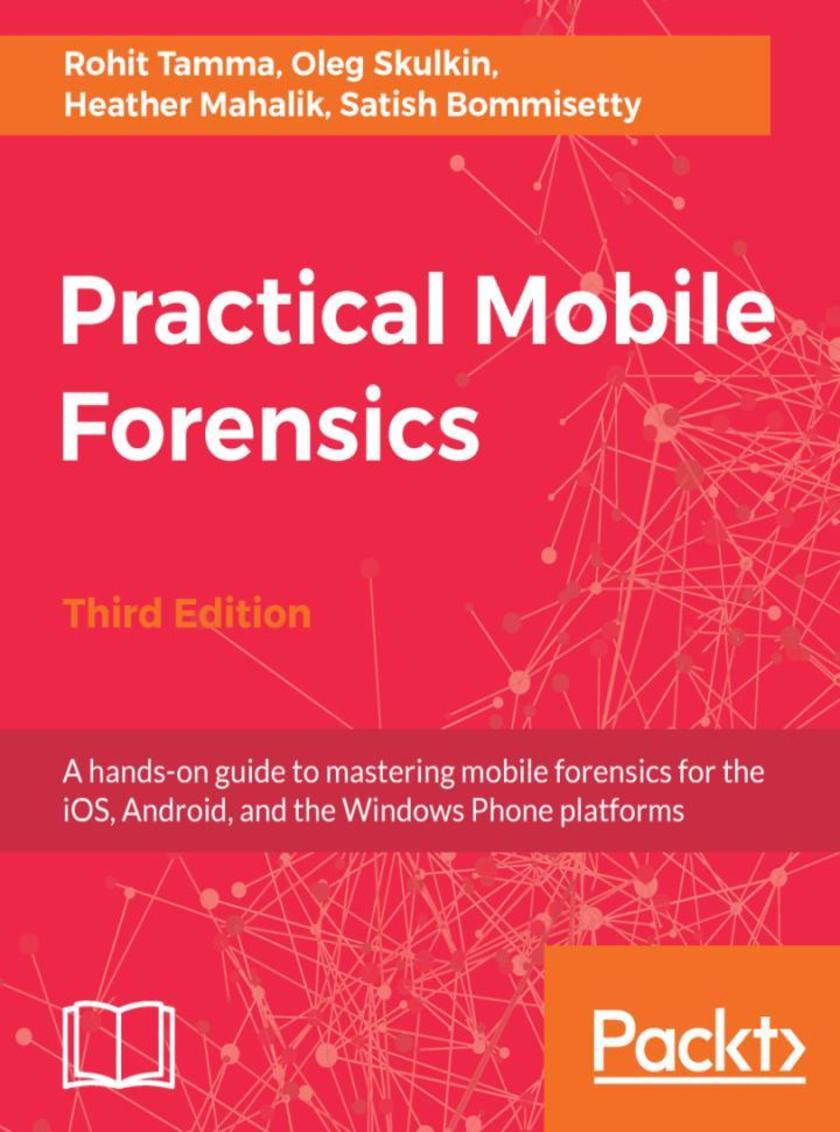
Practical Mobile Forensics - Third Edition
¥81.74
Investigate, analyze, and report iOS, Android, and Windows devices About This Book ? Get hands-on experience in performing simple to complex mobile forensics techniques. ? Retrieve and analyze data stored not only on mobile devices but also through the cloud and other connected mediums. ? A practical guide to leveraging the power of mobile forensics on popular mobile platforms with lots of tips, tricks, and caveats. Who This Book Is For If you are a forensics professional and are eager to widen your forensics skill set to mobile forensics then, this book is for you. Some understanding of digital forensics practices would do wonders. What You Will Learn ? Discover the new techniques in practical mobile forensics ? Understand the architecture and security mechanisms present in iOS and Android platforms ? Identify sensitive files on the iOS and Android platforms ? Set up a forensic environment ? Extract data from the iOS and Android platforms ? Recover data on the iOS and Android platforms ? Understand the forensics of Windows devices ? Explore various third-party application techniques and data recovery techniques In Detail Covering up-to-date mobile platforms, this book will focuses on teaching you the most recent techniques for investigating mobile devices. We delve mobile forensics techniques in iOS 9-11, Android 7-8 devices, and Windows 10. We will demonstrate the latest open source and commercial mobile forensics tools, enabling you to analyze and retrieve data effectively. You will learn how to introspect and retrieve data from the cloud, and document and prepare reports of your investigations. By the end of this book, you will have mastered the current operating systems and the relevant techniques to recover data from mobile devices by leveraging open source solutions. Style and approach This book takes a very practical approach and depicts real-life mobile forensics scenarios with lots of tips and tricks to help you acquire the required forensics skillset for various mobile platforms.
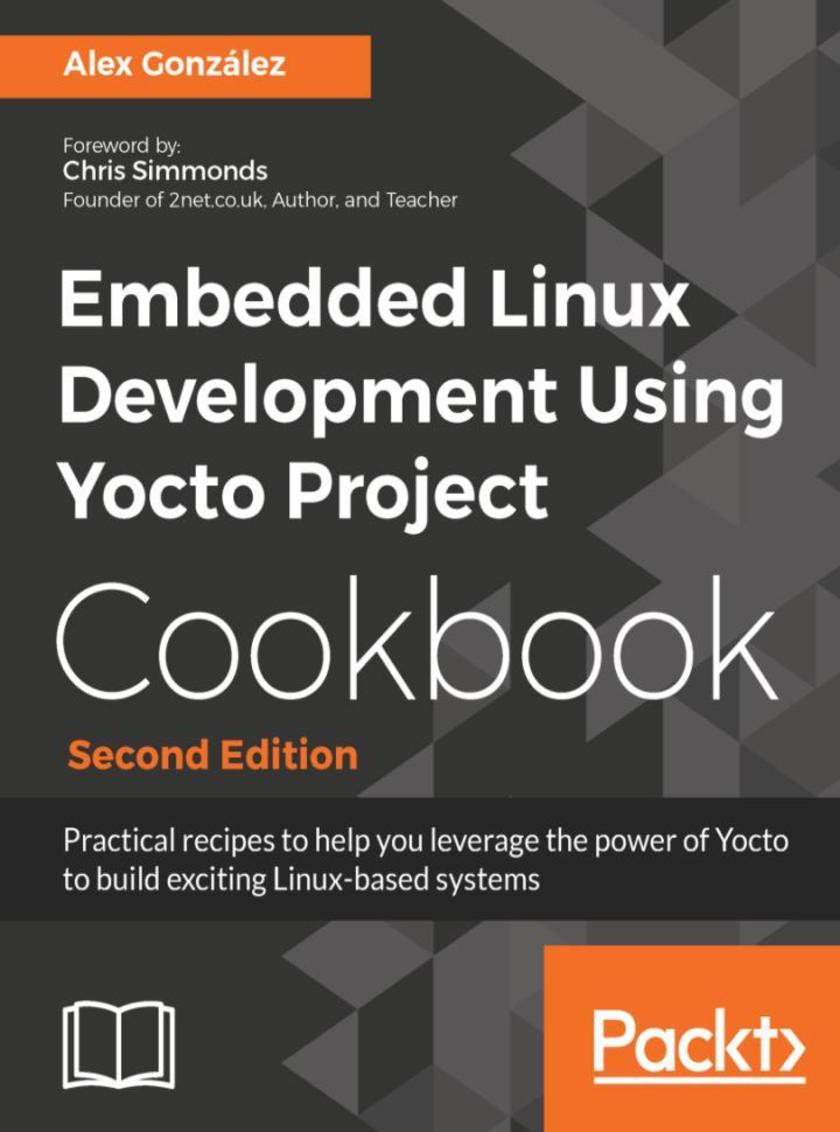
Embedded Linux Development Using Yocto Project Cookbook - Second Edition
¥81.74
Over 79 hands-on recipes for professional embedded Linux developers to optimize and boost their Yocto Project know-how About This Book ? Optimize your Yocto setup to speed up development and debug build issues ? Use what is quickly becoming the standard embedded Linux product builder framework—the Yocto Project ? Recipe-based implementation of best practices to optimize your Linux system Who This Book Is For If you are an embedded Linux developer with the basic knowledge of Yocto Project, this book is an ideal way to broaden your knowledge with recipes for embedded development. What You Will Learn ? Optimize your Yocto Project setup to speed up development and debug build issues ? Use Docker containers to build Yocto Project-based systems ? Take advantage of the user-friendly Toaster web interface to the Yocto Project build system ? Build and debug the Linux kernel and its device trees ? Customize your root filesystem with already-supported and new Yocto packages ? Optimize your production systems by reducing the size of both the Linux kernel and root filesystems ? Explore the mechanisms to increase the root filesystem security ? Understand the open source licensing requirements and how to comply with them when cohabiting with proprietary programs ? Create recipes, and build and run applications in C, C++, Python, Node.js, and Java In Detail The Yocto Project has become the de facto distribution build framework for reliable and robust embedded systems with a reduced time to market. You'll get started by working on a build system where you set up Yocto, create a build directory, and learn how to debug it. Then, you'll explore everything about the BSP layer, from creating a custom layer to debugging device tree issues. In addition to this, you’ll learn how to add a new software layer, packages, data, *s, and configuration files to your system. You will then cover topics based on application development, such as using the Software Development Kit and how to use the Yocto project in various development environments. Toward the end, you will learn how to debug, trace, and profile a running system. This second edition has been updated to include new content based on the latest Yocto release. Style and approach This recipe-based book will guide you through all the development stages of an embedded Linux product design using the Yocto Project.
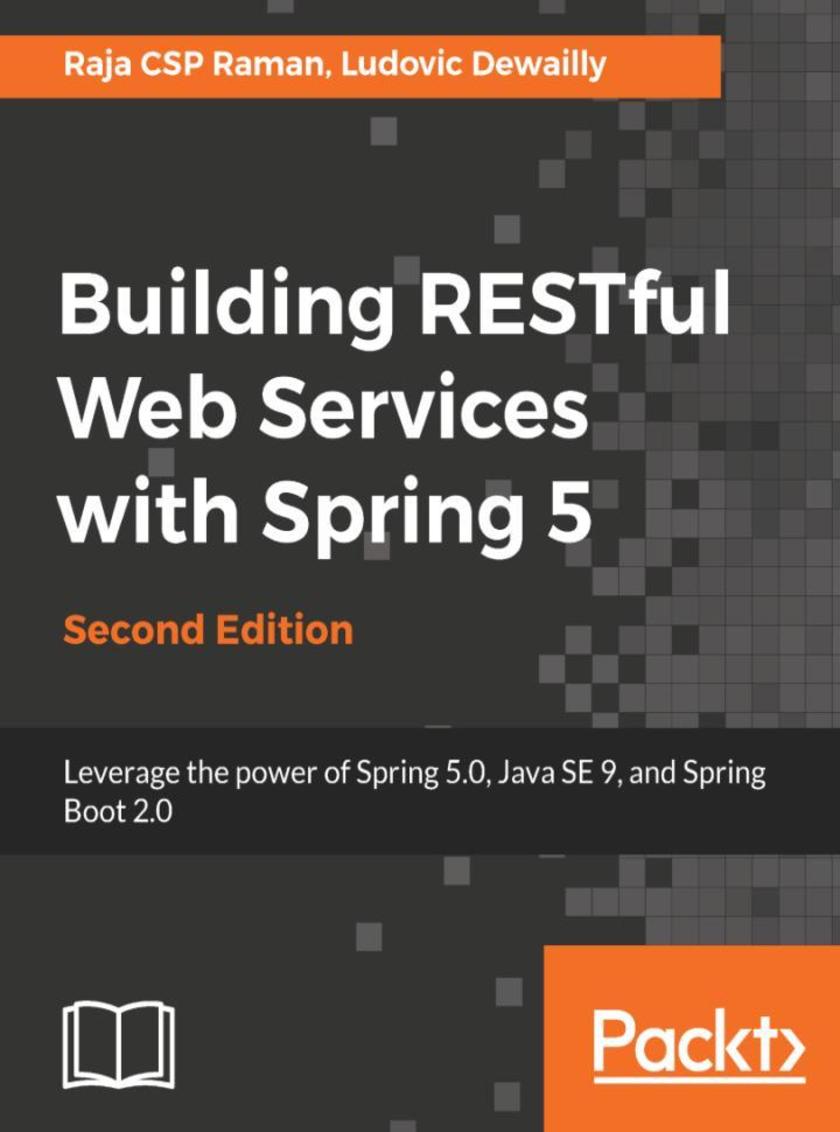
Building RESTful Web Services with Spring 5 - Second Edition
¥81.74
Find out how to implement the REST architecture to build resilient software in Java with the help of the Spring 5.0 framework. About This Book ? Follow best practices and explore techniques such as clustering and caching to achieve a reactive, scalable web service, ? Leverage the Spring Framework to quickly implement RESTful endpoints, ? Learn to implement a client library for a RESTful web service using the Spring Framework along with the new front end framework. Who This Book Is For This book is intended for those who want to learn to build RESTful web services with the latest Spring 5.0 Framework. To make best use of the code samples included in the book, you should have a basic knowledge of the Java language. Previous experience with the Spring Framework would also help you get up and running quickly. What You Will Learn ? Deep dive into the principles behind REST ? Expose CRUD operations through RESTful endpoints with the Spring Framework ? Devise response formats and error handling strategies, offering a consistent and flexible structure to simplify integration for service consumers ? Follow the best approaches for dealing with a service's evolution while maintaining backward compatibility ? Understand techniques to secure web services ? Comply with the best ways to test RESTful web services, including tips for load testing ? Optimise and scale web services using techniques such as caching and clustering In Detail REST is an architectural style that tackles the challenges of building scalable web services. In today's connected world, APIs have taken a central role on the web. APIs provide the fabric through which systems interact, and REST has become synonymous with APIs.The depth, breadth, and ease of use of Spring makes it one of the most attractive frameworks in the Java ecosystem. Marrying the two technologies is therefore a very natural choice.This book takes you through the design of RESTful web services and leverages the Spring Framework to implement these services. Starting from the basics of the philosophy behind REST, you'll go through the steps of designing and implementing an enterprise-grade RESTful web service. Taking a practical approach, each chapter provides code samples that you can apply to your own circumstances.This second edition brings forth the power of the latest Spring 5.0 release, working with MVC built-in as well as the front end framework. It then goes beyond the use of Spring to explores approaches to tackle resilience, security, and scalability concerns. Improve performance of your applications with the new HTTP 2.0 standards. You'll learn techniques to deal with security in Spring and discover how to implement unit and integration test strategies.Finally, the book ends by walking you through building a Java client for your RESTful web service, along with some scaling techniques using the new Spring Reactive libraries. Style and approach Readers will be taken through a set of specific patterns and tested practices to build effective RESTful systems in Java using the Spring framework.
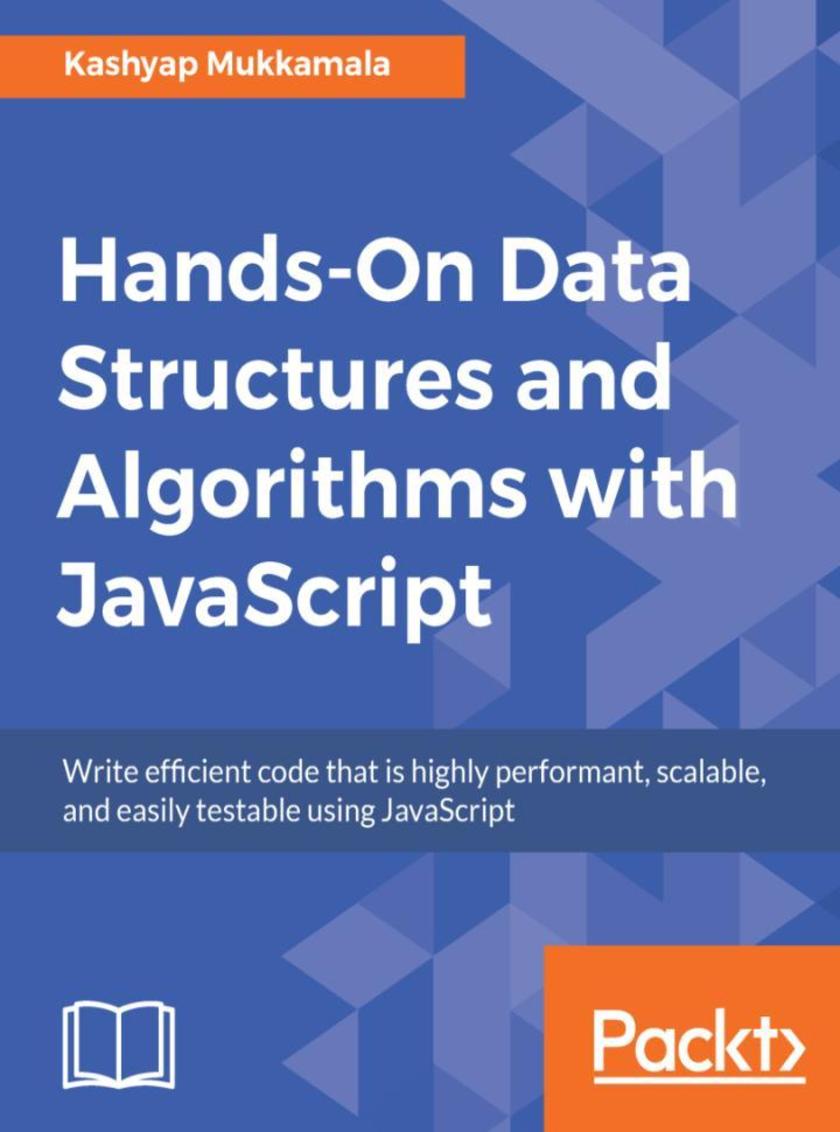
Hands-On Data Structures and Algorithms with JavaScript
¥81.74
Increase your productivity by implementing complex data structures and algorithms using JavaScript About This Book ? A step by step guide, which will provide you with a thorough discussion on the analysis and design of fundamental JavaScript data structures ? Get a better understanding of advanced concepts such as space and time complexity to optimize your code ? Focus more on solving the business problem and less on the technical challenges involved Who This Book Is For If you are a JavaScript developer looking for practical examples to implement data structures and algorithms in your web applications, then this book is for you. Familiarity with data structures and algorithms will be helpful to get the most out of this book. What You Will Learn ? Build custom Back buttons embedded within your application ? Build part of a basic JavaScript syntax parser and evaluator for an online IDE ? Build a custom activity user tracker for your application ? Generate accurate recommendations for credit card approval using Decision Trees ? Simplify complex problems using a graphs ? Increase the performance of an application using micro-optimizations In Detail Data structures and algorithms are the fundamental building blocks of computer programming. They are critical to any problem, provide a complete solution, and act like reusable code. Using appropriate data structures and having a good understanding of algorithm analysis are key in JavaScript to solving crises and ensuring your application is less prone to errors. Do you want to build applications that are high-performing and fast? Are you looking for complete solutions to implement complex data structures and algorithms in a practical way? If either of these questions rings a bell, then this book is for you! You'll start by building stacks and understanding performance and memory implications. You will learn how to pick the right type of queue for the application. You will then use sets, maps, trees, and graphs to simplify complex applications. You will learn to implement different types of sorting algorithm before gradually calculating and analyzing space and time complexity. Finally, you'll increase the performance of your application using micro optimizations and memory management. By the end of the book you will have gained the skills and expertise necessary to create and employ various data structures in a way that is demanded by your project or use case. Style and approach Step-by-step topics will help you get started with solutions for implementing classic data structures and algorithms. Learn by doing with hands-on code snippets that give you practical experience of the subject.
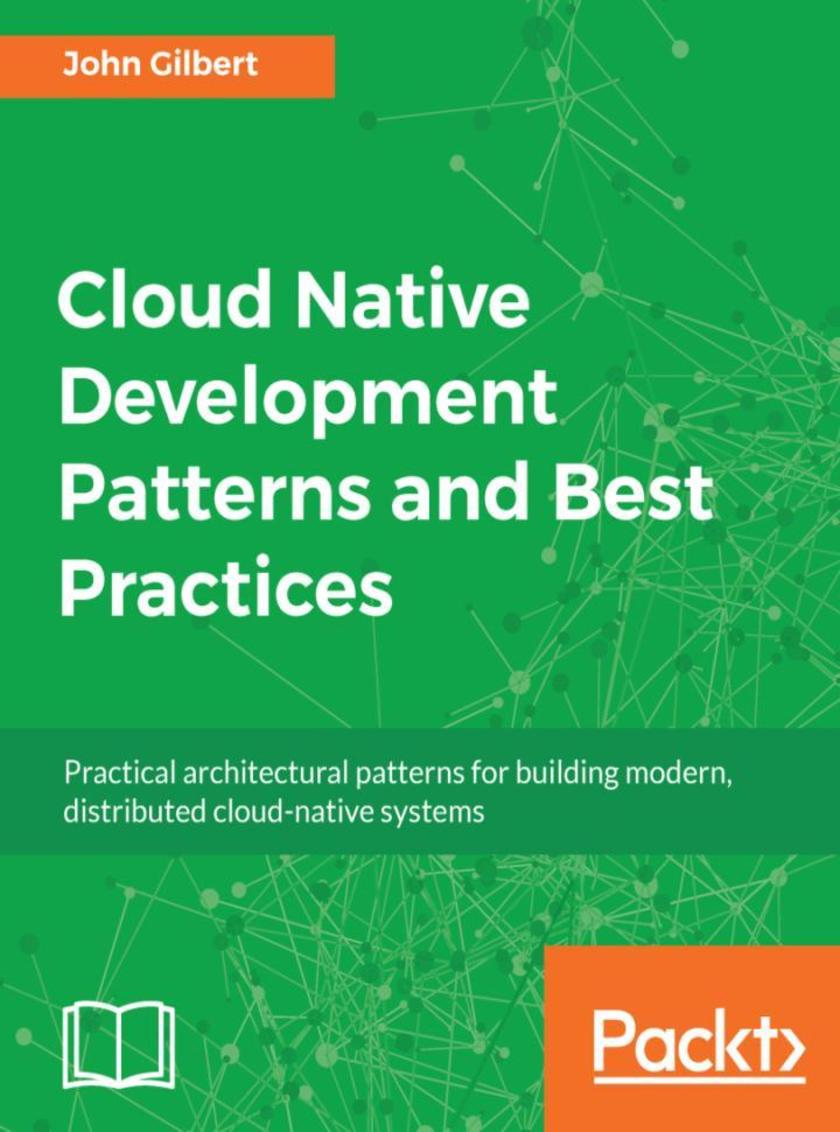
Cloud Native Development Patterns and Best Practices
¥81.74
Learn to apply cloud-native patterns and practices to deliver responsive, resilient, elastic, and message-driven systems with confidence About This Book ? Understand the architectural patterns involved in cloud-native architectures ? Minimize risk by evolving your monolithic applications into distributed cloud-native systems ? Discover best practices for applying cloud-native patterns to your enterprise-level cloud applications Who This Book Is For This book is for developers who would like to progress into building cloud-native systems and are keen to learn the patterns involved. Basic knowledge of programming and cloud computing is required. What You Will Learn ? Enable massive scaling by turning your database inside out ? Unleash flexibility via event streaming ? Leverage polyglot persistence and cloud-native databases ? Embrace modern continuous delivery and testing techniques ? Minimize risk by evolving your monoliths to cloud-native ? Apply cloud-native patterns and solve major architectural problems in cloud environment In Detail Build systems that leverage the benefits of the cloud and applications faster than ever before with cloud-native development. This book focuses on architectural patterns for building highly scalable cloud-native systems. You will learn how the combination of cloud, reactive principles, devops, and automation enable teams to continuously deliver innovation with confidence. Begin by learning the core concepts that make these systems unique. You will explore foundational patterns that turn your database inside out to achieve massive scalability with cloud-native databases. You will also learn how to continuously deliver production code with confidence by shifting deployment and testing all the way to the left and implementing continuous observability in production. There's more—you will also learn how to strangle your monolith and design an evolving cloud-native system. By the end of the book, you will have the ability to create modern cloud-native systems. Style and approach This book follows a pragmatic approach to understand cloud-native design patterns and explains the functioning and design considerations to build modern cloud-native systems in depth.
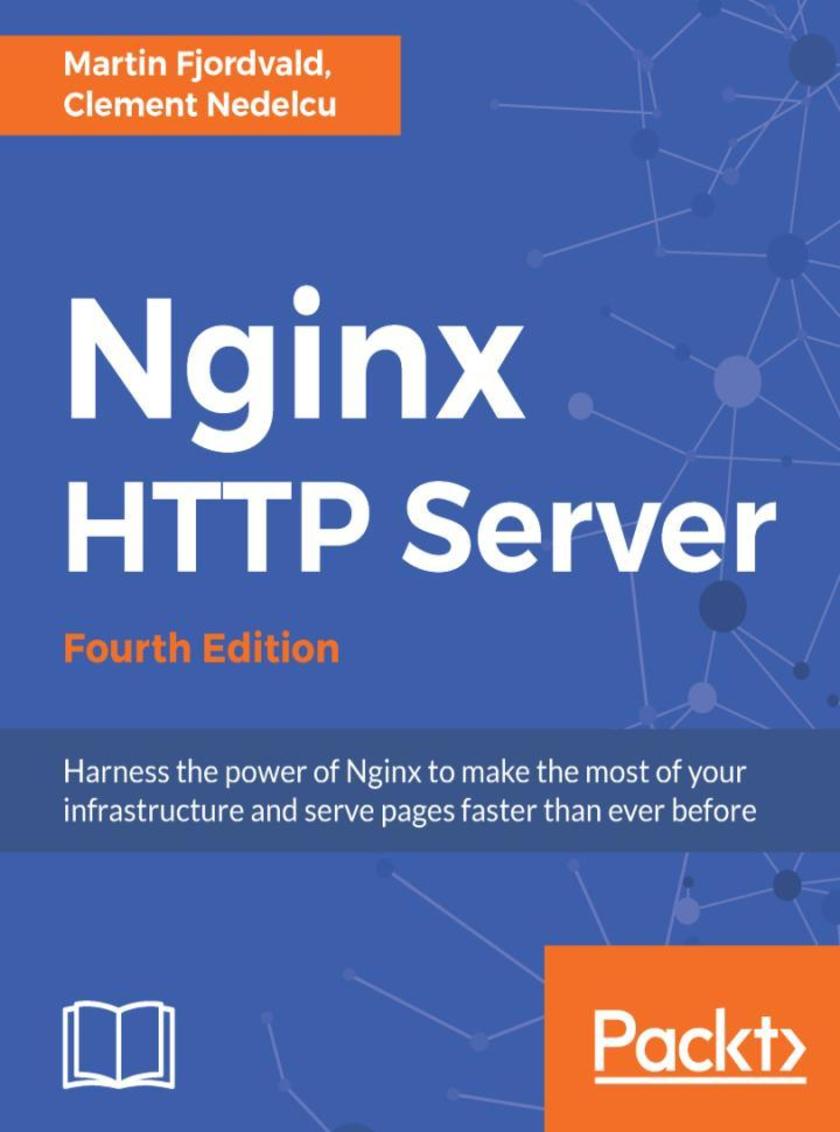
Nginx HTTP Server - Fourth Edition
¥81.74
Make the most of your infrastructure and serve pages faster than ever with Nginx. About This Book ? Discover possible interactions between Nginx and Apache to get the best of both worlds ? Learn to exploit the features offered by Nginx for your web applications ? Get your hands on the most updated version of Nginx (1.13.2) to support all your web administration requirements Who This Book Is For This book is a perfect match to web administrators who are interested in solutions to optimize their infrastructure. Whether you are looking into replacing your existing web server software or integrating a new tool to cooperate with applications that are already up and running, this book is your ideal resource. What You Will Learn ? Download and install Nginx on your system ? Prepare a basic configuration and test your initial setup ? Discover the core functionality of the HTTP module ? Make the most of first- and third-party Nginx modules ? Set up Nginx to work with PHP, Python, and other applications ? Learn how to set up Nginx to work with Apache ? Fully replace Apache with Nginx ? Optimize your architecture with threads or load balancing ? Identify errors in configuration and learn basic troubleshooting techniques ? Consult the exhaustive directive and module index for reference In Detail Nginx is a lightweight HTTP server designed for high-traffic websites, with network scalability as the primary objective. With the advent of high-speed internet access, short loading times and fast transfer rates have become a necessity. This book is a detailed guide to setting up Nginx in ways that correspond to actual production situations: as a standalone server, as a reverse proxy, interacting with applications via FastCGI, and more. In addition, this complete direct reference will be indispensable at all stages of the configuration and maintenance processes. This book mainly targets the most recent version of Nginx (1.13.2) and focuses on all the new additions and improvements, such as support for HTTP/2, improved dynamic modules, security enhancements, and support for multiple SSL certificates. This book is the perfect companion for both Nginx beginners and experienced administrators. For beginners, it will take you through the complete process of setting up this lightweight HTTP server on your system and configuring its various modules so that it does exactly what you need quickly and securely. For more experienced administrators, this book provides different approaches that can help you make the most of your current infrastructure. Nginx can be employed in many situations, whether you are looking to construct an entirely new web-serving architecture or simply want to integrate an efficient tool to optimize your site loading speeds. Style and approach This book aims to serve as a handy reference of all Nginx first-party modules and directives, allowing the reader to develop their own web configuration more efficiently.




 购物车
购物车 个人中心
个人中心



